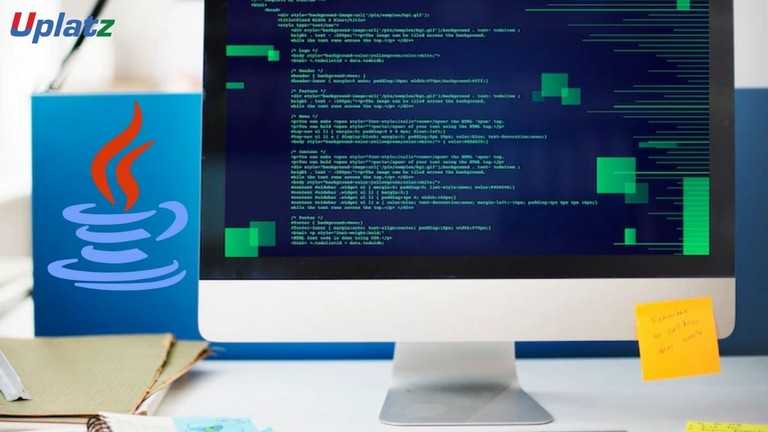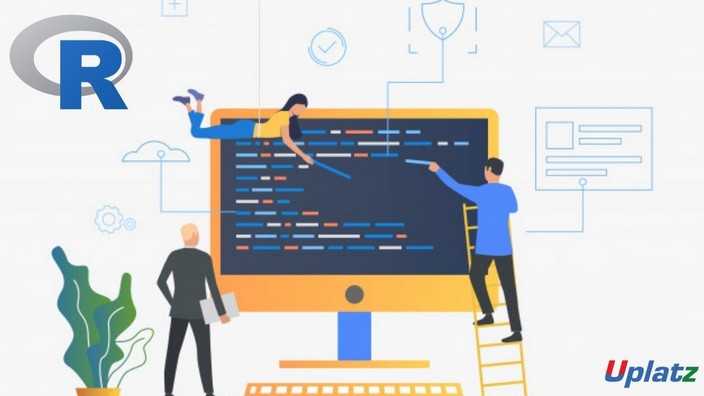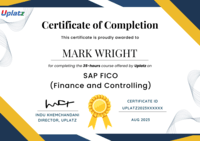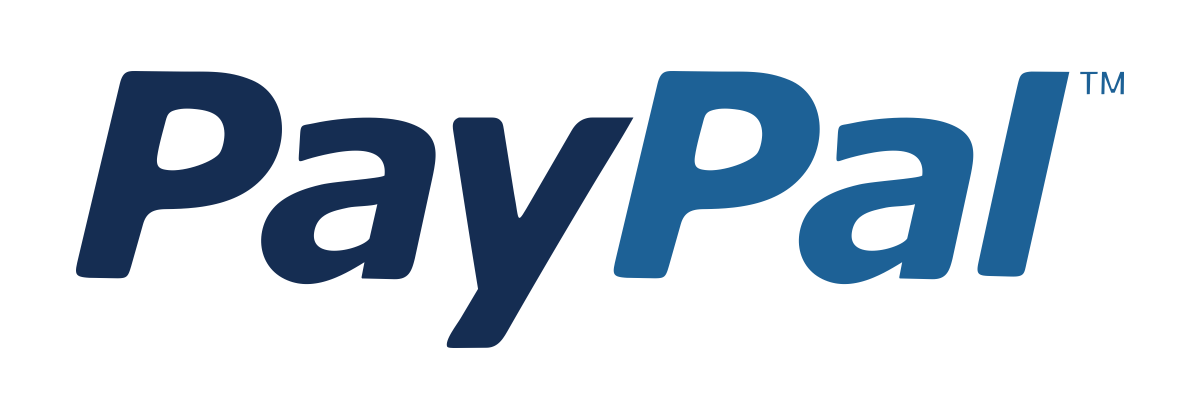JavaScript - Mastering Modern Web Development with Advanced Frameworks
Master Modern Web Development with JavaScript, React, Angular, Vue & More to Build Fast, Scalable, and Interactive Applications
Course Duration: 15 Hours
Price Match Guarantee
Full Lifetime Access
Access on any Device
Technical Support
Secure Checkout
Course Completion Certificate
 91% Started a new career
BUY THIS COURSE (
91% Started a new career
BUY THIS COURSE (USD 12 USD 41 )-
 82% Got a pay increase and promotion
82% Got a pay increase and promotion
Bestseller
Highly Rated
Job-oriented
Google Drive access
Students also bought -
-

- Java Programming (advanced)
- 10 Hours
- USD 12
- 316 Learners
-
- JavaScript Programming (Advanced)
- 22 Hours
- USD 12
- 421 Learners
-

- R Programming
- 10 Hours
- USD 12
- 1821 Learners

JavaScript – Self-Paced Online Course
Uplatz presents an all-encompassing course titled "JavaScript: Mastering Modern Web Development with Advanced Frameworks", designed to provide learners with an in-depth understanding of JavaScript and its powerful ecosystem. Delivered as a self-paced learning program, this course includes comprehensive video lectures and practical content. Upon successful completion, you will be awarded a Course Completion Certificate from Uplatz, enhancing your credentials in web development.
JavaScript is the lifeblood of dynamic and interactive web experiences. It's the scripting language that enables websites to respond to user actions, change content without refreshing the page, and display visually engaging elements like image sliders, animations, and interactive forms. From simple client-side tasks to complex full-stack applications, JavaScript plays a pivotal role in modern digital solutions.
Why Learn JavaScript?
JavaScript is an essential tool in the toolkit of any aspiring or professional web developer. Its widespread use across front-end, back-end, and mobile app development makes it one of the most versatile and in-demand languages in the world today.
How JavaScript Works
JavaScript operates primarily as a client-side scripting language, meaning it runs directly in the user’s web browser. When a user accesses a webpage, their browser loads HTML, CSS, and JavaScript files. JavaScript then executes in the background, making changes to the content and behavior of the page in real-time—without requiring a reload.
One of the core features of JavaScript is its event-driven nature. It listens for events like mouse clicks, form submissions, or keystrokes, and responds dynamically by executing relevant functions. This responsiveness is what gives web applications a seamless, app-like experience.
Key Features of JavaScript
- Dynamic Content Manipulation
JavaScript can modify HTML and CSS on the fly, allowing developers to create real-time updates, hide or reveal content, and build interactive UI components. - Enhanced User Interaction
Forms, buttons, modals, and navigation elements can all be made interactive, improving usability and user experience. - Platform Versatility
Initially designed for browsers, JavaScript now powers server-side logic (via Node.js), mobile apps (with frameworks like React Native), and even desktop apps (using Electron). - Lightweight and Efficient
JavaScript is designed to be minimal yet powerful, ideal for performance-sensitive web environments. - Beginner-Friendly Syntax
Its syntax is relatively easy to grasp, especially for beginners, making it a perfect starting point for entering the world of programming. - Rich Ecosystem and Community
JavaScript is supported by a vast collection of libraries, frameworks, tools, and a vibrant developer community, making learning and development smoother and faster.
Benefits of Learning JavaScript
1. High Demand & Career Opportunities
JavaScript developers are in high demand across startups, enterprises, and tech giants. Whether you're aiming to become a front-end developer, back-end developer, or full-stack engineer, JavaScript is a core requirement. The growing reliance on digital platforms ensures consistent job opportunities and high earning potential.
Moreover, JavaScript’s utility isn’t confined to web development. With frameworks like React Native for mobile and Electron for desktop, your JavaScript skills can help you build apps across multiple platforms.
2. Ease of Learning and Fast Feedback Loop
Thanks to its simplicity and the ability to see results immediately in a browser, JavaScript is highly beginner-friendly. This instant feedback loop makes learning engaging and motivates learners to experiment, iterate, and improve rapidly.
3. Boosts Creativity and Logical Thinking
Learning JavaScript isn't just about writing code—it's about solving problems and building solutions. From creating an interactive quiz to developing a custom dashboard, you can transform ideas into functioning apps, sharpening both your creative and analytical skills.
4. Strong Community and Open-Source Culture
JavaScript has one of the largest and most active developer communities in the world. Forums, meetups, GitHub repositories, and free learning resources are just a few clicks away. Popular open-source frameworks like React, Vue.js, and Angular are continuously updated and improved by this community.
5. Future-Proof and Ever-Evolving
As web technologies continue to evolve, JavaScript remains at the forefront. With the introduction of modern ES6+ features, async programming patterns, and innovations like WebAssembly, JavaScript continues to grow, adapt, and stay relevant.
This Uplatz course equips you with the essential and advanced skills needed to build high-performance, interactive web applications. Whether you’re starting your journey or looking to deepen your knowledge, this course offers the right blend of theory, practical examples, and project-based learning to help you become a proficient JavaScript developer.
By mastering JavaScript, you’ll unlock a world of professional opportunities, contribute to innovative projects, and future-proof your career in the digital age.
Course Objectives Back to Top
By the end of this course, learners will be able to:
- Understand JavaScript fundamentals and the evolution of ECMAScript standards.
- Master DOM manipulation, event handling, and asynchronous programming using Promises and async/await.
- Build dynamic user interfaces using modern frameworks like React, Angular, and Vue.js.
- Manage application state effectively using tools like Redux, Context API, and Vuex.
- Design and implement RESTful APIs using Node.js and Express.
- Apply routing, authentication, and authorization techniques in single-page applications.
- Optimize web performance, accessibility, and SEO in modern apps.
- Use version control, CI/CD pipelines, and package managers like npm and yarn.
- Perform unit testing, integration testing, and E2E testing using JavaScript testing libraries.
- Deploy full-stack web applications on platforms like Netlify, Vercel, or Heroku.
Course Syllabus Back to Top
JavaScript: Mastering Modern Web Development with Advanced Frameworks Comprehensive Course Syllabus
Module 1: Introduction to JavaScript
- What is JavaScript?
Understanding JavaScript and its applications in modern development. - JavaScript Overview
Overview of core JavaScript concepts covered throughout the course. - JavaScript's Role in Web Development
How JavaScript powers interactivity in web applications. - JavaScript vs HTML vs CSS
Comparison and roles of HTML, CSS, and JavaScript with practical examples. - History of JavaScript and ECMAScript
Evolution of JavaScript and ECMAScript standards from inception to modern day.
Module 2: JavaScript Development Environment
- Using Visual Studio Code for JavaScript
Installing, configuring, and customizing VS Code for JavaScript development. - Executing JavaScript in the Browser Console
Introduction to writing and testing JavaScript in the browser.
Module 3: Core JavaScript Concepts
- Variables and Primitive Data Types
Declaring variables using let, const, var; understanding primitive types. - Arrays and Objects
Working with arrays, objects, their properties, and combining both. - Arithmetic Operators
Performing arithmetic operations and understanding operator precedence. - Comparison Operators
Loose (==) vs strict (===) comparisons and how to use them. - Logical Operators
Understanding logical AND, OR, and NOT operations. - Assignment and Bitwise Operators
Using assignment (=, +=, etc.) and introduction to bitwise operators. - Comments in JavaScript
Writing single-line and multi-line comments for code clarity.
Module 4: Control Flow in JavaScript
- Conditional Statements
Using if, else if, and else statements with examples. - Ternary Operator
Writing concise conditional expressions. - Switch Case Statements
Structuring multiple condition checks with switch, case, and default.
Module 5: Loops and Iterations
- Looping Constructs
Exploring for, while, and do...while loops. - Controlling Loops
Utilizing break and continue to manage loop execution.
Module 6: Functions and Scope
- Global and Local Scope
Understanding function scope and block scope. - JavaScript Functions
Declaring and invoking various types of functions. - Arrow Functions
Simplifying function expressions using ES6 arrow functions. - Function Parameters and Arguments
Passing values to functions and handling arguments.
Module 7: Working with Objects and Arrays
- Creating and Using Objects
Defining object literals and accessing their properties. - Using this Keyword
Understanding the context of this in functions and methods. - Array Basics
Declaring arrays and applying basic array methods. - Advanced Array Methods
Deep dive into methods like map, filter, reduce, find, and more. - let, const, and var
Understanding differences and best practices for variable declarations. - Template Literals
Embedding expressions and multi-line strings using backticks. - Destructuring Arrays and Objects
Simplifying data extraction using destructuring techniques. - Spread and Rest Operators
Using ... for combining and unpacking data.
Module 8: Modular JavaScript
- Modules: Import and Export
Structuring code using named and default exports/imports.
Module 9: DOM Manipulation and Events
- DOM Manipulation – Part 1
Selecting and updating DOM elements dynamically. - DOM Manipulation – Part 2
Advanced manipulation techniques for UI control. - Event Listeners
Responding to user interactions through event handling.
Module 10: Asynchronous JavaScript & APIs
- Working with APIs
Introduction to REST APIs and asynchronous programming in JavaScript. - Timers in JavaScript
Using setTimeout and setInterval for delayed and repeated execution. - Promises
Understanding promise-based asynchronous code and chaining with .then() and .catch(). - Async/Await
Writing asynchronous code using async functions and await keyword. - Error Handling and Debugging
Techniques to catch, debug, and handle errors gracefully.
Module 11: Capstone Project
- Building a To-Do List Application
Step-by-step implementation of a functional To-Do List app using learned concepts. - Final JavaScript Code for To-Do List
Full code breakdown and review of the completed project.
Module 12: Interview Preparation
- Common JavaScript Interview Questions & Answers
Prepare for job interviews with frequently asked questions and well-structured answers.
Certification Back to Top
Upon successful completion of the JavaScript: Mastering Modern Web Development with Advanced Frameworks course, learners will be awarded a Course Completion Certificate from Uplatz. This certificate formally recognizes your ability to design, build, and deploy dynamic web applications using modern JavaScript and advanced frameworks such as React, Angular, Vue.js, and Node.js.
The certification validates your expertise in core JavaScript concepts, component-based architecture, RESTful API integration, state management, routing, and front-end tooling. It also demonstrates your ability to apply industry best practices for performance optimization, responsive design, version control, and testing using tools like Jest, Webpack, and Git.
This credential showcases your readiness for real-world development roles, highlighting both your technical proficiency and your ability to contribute to scalable, maintainable, and high-performance web applications. Whether you're aiming to become a Frontend Developer, Full Stack Engineer, or JavaScript Specialist, this certificate strengthens your professional profile and enhances your appeal to employers.
The certificate also serves as a solid stepping stone toward advanced certifications in full-stack development, cloud deployment, or specialized JavaScript libraries. Proudly display it in your resume, LinkedIn profile, and portfolio to stand out in a competitive job market and accelerate your development career.
Career & Jobs Back to Top
This course opens up a broad range of career opportunities in web development, from startups to large enterprises. JavaScript is the most in-demand programming language for modern web application development, and mastering it positions you well for roles such as:
- Front-End Developer
- JavaScript Engineer
- Full Stack Developer
- React Developer
- Angular Developer
- Node.js Backend Developer
- Web Application Engineer
JavaScript developers are highly valued across industries including finance, tech, healthcare, media, and education.
Whether you're transitioning into tech, upskilling as a developer, or seeking to specialize in frontend frameworks, this course gives you the hands-on expertise and portfolio-ready experience to succeed.
Interview Questions Back to Top
1. What are the differences between var, let, and const?
Answer: var is function-scoped, while let and const are block-scoped. let allows reassignment, whereas const is read-only after its initial assignment.
Answer: var is function-scoped, while let and const are block-scoped. let allows reassignment, whereas const is read-only after its initial assignment.
2. What is the difference between == and ===?
Answer: == checks for value equality with type coercion, whereas === checks for both value and type equality.
Answer: == checks for value equality with type coercion, whereas === checks for both value and type equality.
3. What is the Event Loop in JavaScript?
Answer: The Event Loop handles asynchronous operations by moving callbacks from the event queue to the call stack when the stack is empty, ensuring non-blocking execution.
Answer: The Event Loop handles asynchronous operations by moving callbacks from the event queue to the call stack when the stack is empty, ensuring non-blocking execution.
4. What is the difference between synchronous and asynchronous code?
Answer: Synchronous code runs sequentially, blocking further execution until it completes. Asynchronous code runs independently using callbacks, Promises, or async/await.
Answer: Synchronous code runs sequentially, blocking further execution until it completes. Asynchronous code runs independently using callbacks, Promises, or async/await.
5. What are Promises and how do they work?
Answer: A Promise is an object representing the eventual completion or failure of an asynchronous operation. It supports .then(), .catch(), and .finally() to handle results.
Answer: A Promise is an object representing the eventual completion or failure of an asynchronous operation. It supports .then(), .catch(), and .finally() to handle results.
6. Explain the concept of closures.
Answer: A closure is a function that retains access to its outer function’s variables even after the outer function has finished executing.
Answer: A closure is a function that retains access to its outer function’s variables even after the outer function has finished executing.
7. How do you perform form validation in JavaScript?
Answer: Form validation can be achieved using built-in HTML5 validation attributes or through JavaScript using event listeners and regular expressions.
Answer: Form validation can be achieved using built-in HTML5 validation attributes or through JavaScript using event listeners and regular expressions.
8. What is the purpose of Webpack?
Answer: Webpack is a module bundler that compiles JavaScript, CSS, and other assets into optimized bundles for efficient browser loading.
Answer: Webpack is a module bundler that compiles JavaScript, CSS, and other assets into optimized bundles for efficient browser loading.
9. What is the Virtual DOM in React?
Answer: The Virtual DOM is an in-memory representation of the actual DOM. React uses it to identify changes and update only the necessary parts of the real DOM, improving performance.
Answer: The Virtual DOM is an in-memory representation of the actual DOM. React uses it to identify changes and update only the necessary parts of the real DOM, improving performance.
10. How is state managed in React?
Answer: State in React is managed using hooks like useState and useReducer, or through state management libraries like Redux and the Context API.
Answer: State in React is managed using hooks like useState and useReducer, or through state management libraries like Redux and the Context API.
Course Quiz Back to Top
FAQs
Back to Top









